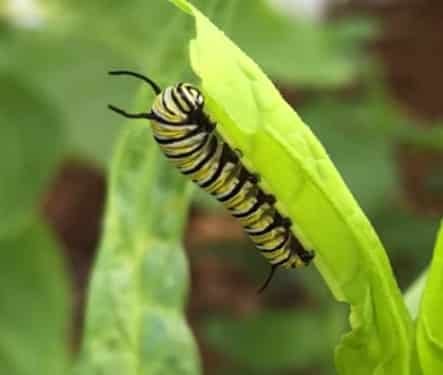
Climate Change Is Decimating Monarch Populations, Research Shows
by David Kindy/Smithsonianmag.com
In many ways, monarch butterflies are the poster child of the insect world. Amateur and professional entomologists alike celebrate the insects’ iconic black-and-orange wings.
However, the beautiful butterfly is under severe threat. Its numbers are dwindling precipitously and scientists are not sure why. Populations of eastern monarchs have declined more than 80 percent in the past two decades while western monarchs have fallen 99.9 percent since the 1980s.
A new study has linked climate change a major driver of monarch population loss. Researchers examining data from 18,000 monarch counts in the United States, Canada and Mexico learned the species is extremely sensitive to weather conditions in its spring and summer breeding grounds.
“Yes, climate change is happening,” study author Elise Zipkin, an ecologist at Michigan State University, tells Adam Vaughn of New Scientist. “It looks like it’s affecting monarchs. Now we have this information, we can have a smart plan for what we might do for conservation of monarchs and other wildlife.”
Published July 19 in Nature Ecology & Evolution, this study reviewed information culled from 25 years of population counts. Zipkin and her colleagues discovered that rainfall and temperature deviations from long-term averages over the past 15 years were seven times more impactful than other causes, including herbicides, pesticides and habitat loss.

Carol graduated from Riverside White Cross School of Nursing in Columbus, Ohio and received her diploma as a registered nurse. She attended Bowling Green State University where she received a Bachelor of Arts Degree in History and Literature. She attended the University of Toledo, College of Nursing, and received a Master’s of Nursing Science Degree as an Educator.
She has traveled extensively, is a photographer, and writes on medical issues. Carol has three children RJ, Katherine, and Stephen – one daughter-in-law; Katie – two granddaughters; Isabella Marianna and Zoe Olivia – and one grandson, Alexander Paul. She also shares her life with her husband Gordon Duff, many cats, and two rescues.
ATTENTION READERS
We See The World From All Sides and Want YOU To Be Fully InformedIn fact, intentional disinformation is a disgraceful scourge in media today. So to assuage any possible errant incorrect information posted herein, we strongly encourage you to seek corroboration from other non-VT sources before forming an educated opinion.
About VT - Policies & Disclosures - Comment Policy




More like Climate Engineering, as Dan Wiggington at Geoengineering Watch thoroughly document, still on youtube weekly (probably not for long), and in their excellent and disturbing documentary, “The Dimming.”
I don’t suppose spraying BT on areas where gypsy moths are at that ‘very special stage’ would impact other catapilers? No Science has biology on lock down. They never make mistakes. But, than those religious folks with faith in god never go wrong either.
Note: If a graduate student were to apply for a milkweed causation grant, it would be rejected if Climate were not considered.
Come on!
Corporate Agriculture and field dimension increases along with herbicide clearing of field borders have eliminated most of the milkweed plants that Monarchs require.
Growing up in Bakersfield every alley and farm roadside had milkweed with Monarch caterpillars.
There are none now.
Why don’t we look at mandating milkweed belts under the Endangered Species Act, Carol?
The see what happens to the Monarchs.
I agree, milkweed was prevalent in fields of hay or corn here, and certainly on the perimeter.
I have 3 plants next to my garage, and the Monarchs come to them every year.
The weather here has not changed much, but the fields sure have. There are almost no insects of any kind. It is Monsanto and other monster plant farmers.
Comments are closed.